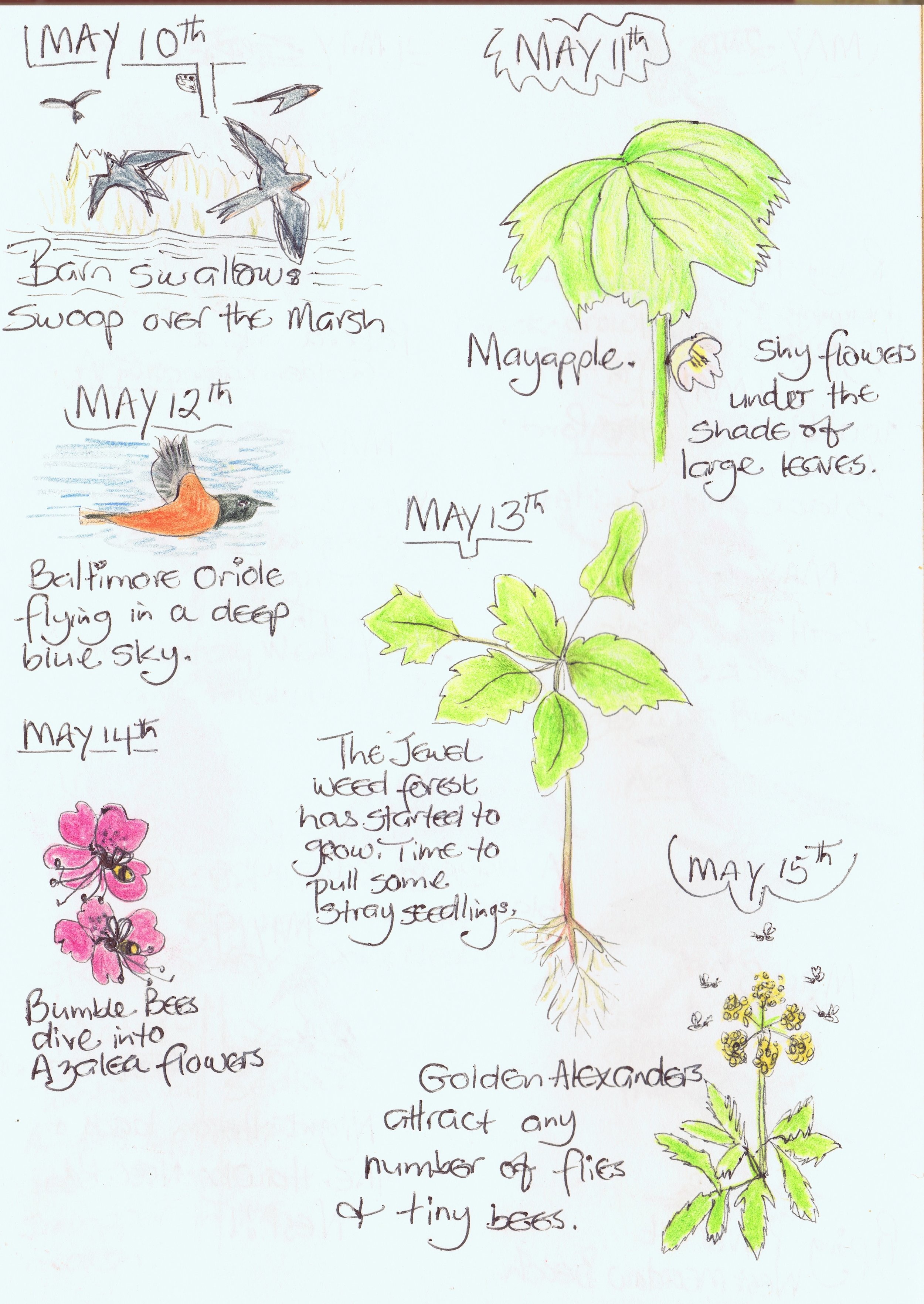Colorful pebbles on the shore line. The hop and skip, hop and skip of robins on the lawn. The clattering call of a kingfisher. Who lives in the knot hole of this tree? The downy woodpecker, who bobs and spirals on the sassafras? Heavy snow leaves trees with sleeves, little birds shelter in caves of white. Robins skid and sip melting ice on the pond. Twigs glisten with condensing fog. Evergreens whisper in a stiff winter breeze.
Gnats dance on a warm winter day, maple buds are red against a deep blue sky. Mourning Cloak warms its dark wings against a rock. Tiny bees are about. Shoots pierce the duff, ferns unfurl. Barn swallows swoop over the marsh, bumble bees dive into flowers. Terns plunge for fish. A colony of tiny ants makes piles of sand. Robin builds a nest.
Fireflies blink at dusk. Green sweat bees lick aphid honeydew. Fiddler crabs run away, claws going clickety, click. Spiders jump, flower flies hover, flower beetles tumble. Fungi fruit after summer rainfall - dog vomit slime mold, crown-tipped coral fungus, beefsteak mushroom and red chanterelle. Ambush bugs wait for prey amongst the flowers. Skippers mate in the meadow. Box turtle trundles by.
Redstarts, black-throated blues bath in the pond. Goldfinches peck at seed. Squirrel plants an acorn in a flower pot. Male bumble bees bivouac on goldenrod stems. Tiny parachutes of seed travel on a breeze. There are fluffy pompoms on golden aster and ironweed. Lime green veins on a vermillion maple leaf. Crimson winterberries and dusty blue, fleshy cones of juniper are in profusion. Spartina has turned from green to tawny gold. Chipmunks scurry. A woolly bear crosses the road. Samaras whirl to earth. Turtles line up on a log. Widgeon’s wheezing whistle, honking geese above.
Dark clouds have a golden lining. Seed heads and feathers on a grackle catch the sunlight. Gulls feed along the tide line. Sanderlings, like tiny sewing machines, probe the muck. Ducks waddle on the marsh, they tip end up to dabble.
White caps on the Sound Crows buffeted by the wind A blustery day.













